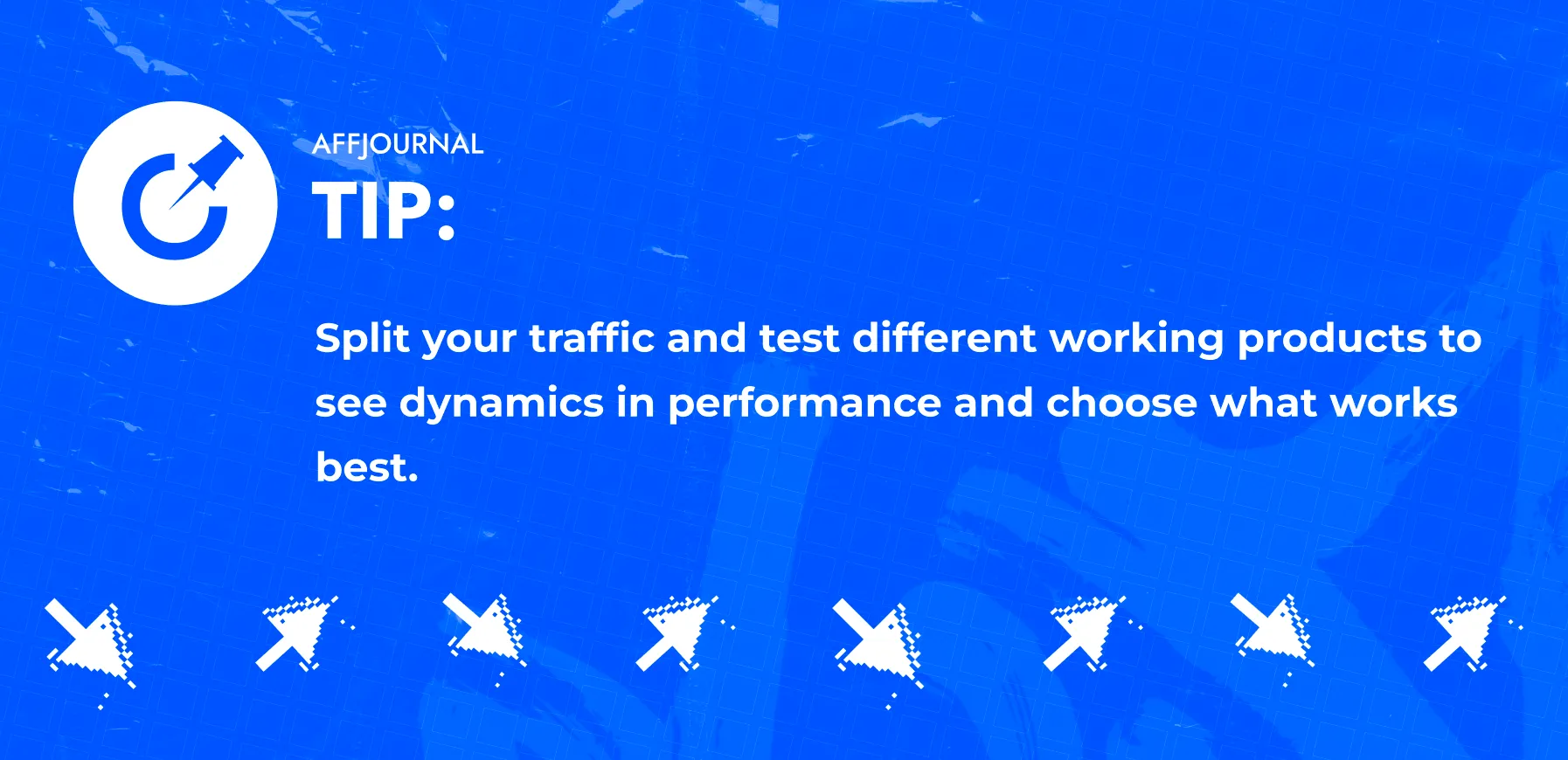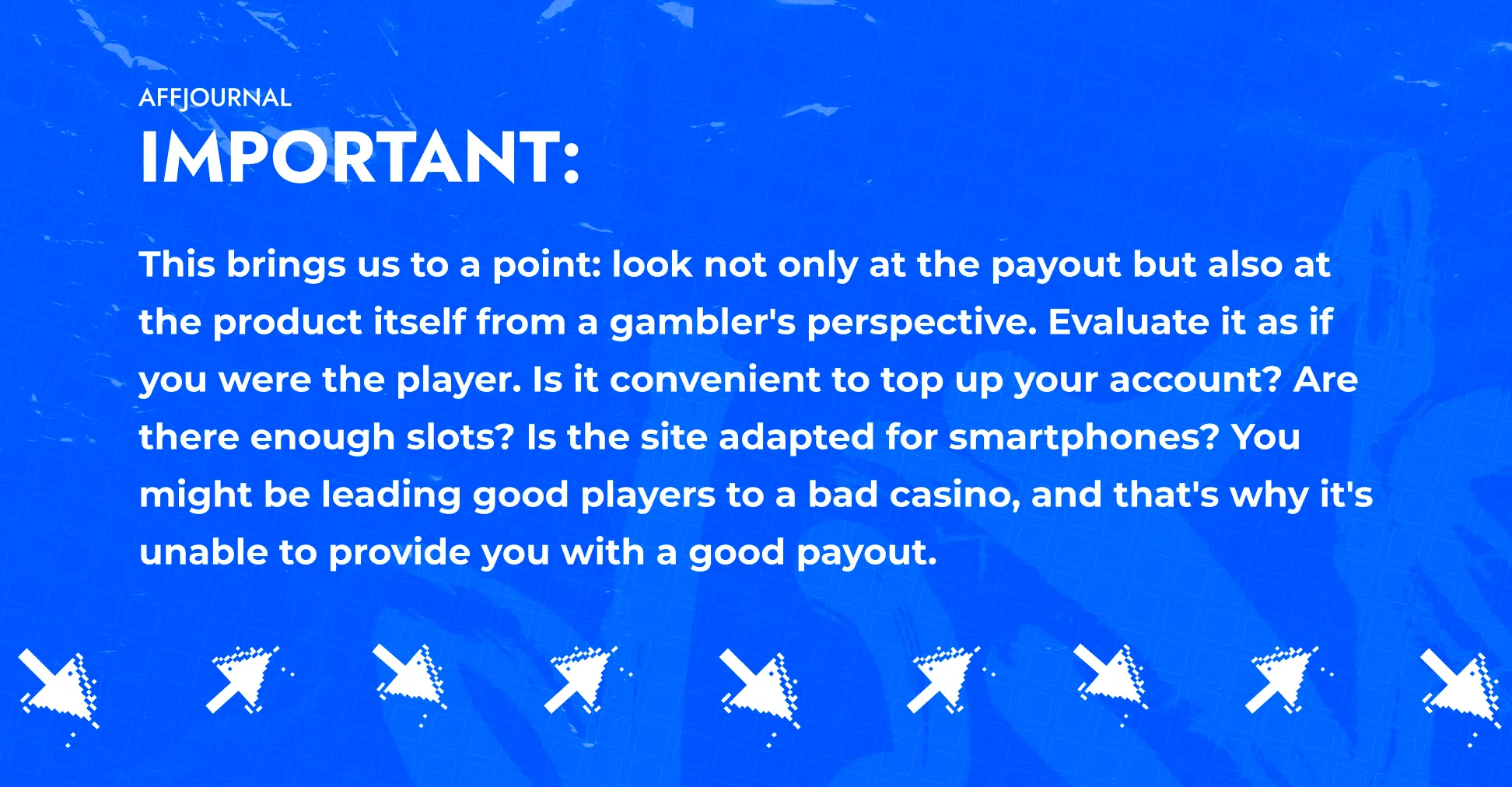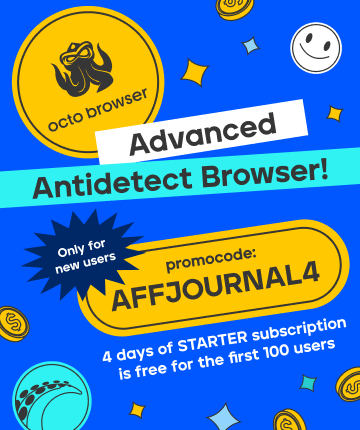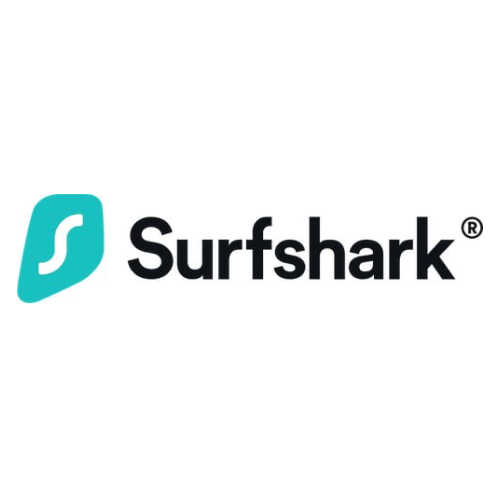

by Editor
Every day, new products emerge on the market. Some have low bids, while others have astronomical ones. Payouts for a player within a single GEO can vary by almost twice, and often, a webmaster chooses a product offering the highest amount. However, such an approach is not entirely objective: the bid amount depends on numerous factors hidden in the depths of analytical and financial intricacies. Increasing payouts for “top GEO and top source” is not something anyone will do. Products boost bids for completely different reasons. Today, we’ll tell you exactly why.
Where did this number come from?
You can't take the bid out of thin air. It’s formed by a multitude of factors, and one of them is the cost of acquiring a player in a specific GEO. Every product, upon entering the affiliate market, must know the cost of leads for specific GEOs and sources. To achieve this, the following are used:
- Internal testing — the company's buyers are testing the offer themselves and determining the optimal lead price;
- Outsourced testing — specialists outside the staff test the product. This could be, for example, a team with confirmed expertise and experience.
Once the cost per lead is determined, operational expenses such as account fees, services, salaries, etc., are added to the traffic costs. Only after this, a portion is added to this figure, which will be the expected net profit for the webmaster. Of course, the advertiser's ROI is taken into account in this process.

The higher the bid, the higher the profit?
“The bid depends on the GEO” and “PPC is gold, while pushes are not so great”. In essence, these phrases are largely true: the bid does depend on the tier, and PPC traffic is more targeted than push traffic. But there is one nuance: profit doesn’t directly depend on the size of the bid.
Let's look at an example:
Suppose the media buying team selected a product for CH with PPC from advertiser A, got a bid of $150, and started running it. Later, they found another similar product from advertiser B with a bid of $300. The same conditions — GEO, source, approaches — but the bid is twice as high. One would think — transfer the traffic to the new advertiser and earn twice as much! Logical? Not quite.
On product A, the conversion rate is 1 in 5, while on product B, it's 1 in 20. Let's say, in both cases, the team receives 300 clicks with a $5000 budget. Then, on the first product, the team will convert 60 players, while on the second one, they will only convert 15.
In case A the team makes a profit of $9000, while in case B it's only $4500. Simple calculations reveal the result: with advertiser B the team will earn twice as less compared to A, even though the bid seems higher. But the profit is in the details.
And as you've already understood, that detail is conversion. Conversion directly influences your income, so always take it into account when running your campaigns.

Thus, the question of profit cannot be directly proportional to the bid amount. If an advertiser gives a bump, it's not guaranteed that you’ll earn more with it. But why does this happen at all? Where do such significant bumps come from?
Competitors’ influence
Naturally, market conditions influence the numbers. Overall, industry metrics should be roughly similar. Of course, working payment methods, the number of slots, product adaptability, support — these are elements that shape a casino. However, to attract players, increase the product's value, and LTV, companies enhance another hundred parameters. As a result, competition among products is constantly growing, both for players and webmasters. This is where it gets interesting. Advertisers can offer bids that differ not just by 10-15-20% but also by 50-100%. Why?
Because of dumping, or artificial inflation of the bid to a level significantly higher than the market average. This becomes particularly evident when considering two different offers targeting the same GEO and traffic from the same source.
Some affiliate networks may resort to dumping to stand out among hundreds of other resellers, and products may use it to present themselves better compared to competitors. But usually there's nothing substantial behind it. It's important to understand that you won't be paid more than they earn. Always base your decisions on this principle and test not only high but also average bids. The real profit lies in the deep work, and the payout size is not the most important factor. What matters most is the ability to use and calculate profit over the long term.
Now that we've clarified the basics, let's return to the bid size itself. Do GEO and traffic sources influence it? Yes! And in different ways: on one hand, the cost of acquiring players; on the other hand, the paying capacity, interest of the audience, and approaches. Let's go step by step.
Geography
First and foremost, the bid for any product in any vertical will be higher when working with more affluent GEOs. Tier-1, tier-2, tier-3 – examples could be Switzerland, Turkey, and Bangladesh, respectively. The wealthier the local residents, the more they will spend on the product. Therefore, the more profit the advertiser can share with you. However, attracting such traffic is more challenging, both financially and in terms of approaches, as the perception of casinos by affluent players differs significantly from that of the poor population.
Traffic source
Conditional pushes don’t provide as attractive an audience as PPC, where the player is already warmed up and actively trying to find slots or even a specific casino. “Quality” sources can include:
- SEO
- PPC
- UAC
From these sources come more active and consistent players, as confirmed by statistics across thousands of products. Therefore, advertisers may be willing to pay more for them. Often, in affiliate networks, different offers are even created for the same product in the same GEO but for different sources. Another option is a table indicating sources and payouts for traffic from different platforms.
There are also other ways to acquire a good, playing audience: hot database mailings (emails, social networks), private resources with targeted subscribers (niche channels, websites).

Approaches
Also, note that the payout rate is not a fixed figure. Yes, we have already said that it cannot be arbitrarily adjusted up and down by the advertiser's own desire. The task of the affiliate department is to correctly set the initial bid for the product and, when increasing/decreasing, base it on it. Because if there are reasons for doing so, it will be done. The main reason for increasing or decreasing the bid is the quality of traffic. In addition to the source, the quality is also influenced by the funnels used by the webmaster.
The concept of a funnel encompasses literally everything: the source, creatives, texts, audience parameters, keywords, the product offering system (if we're talking about the showcase), CTA, and much more. Everything that influences the player's decision to deposit, play, and return to the product. So, what's the difference:
- In schematic traffic, the webmaster's task is to squeeze as much money as possible. Lead on, create fake screenshots, make phone calls, and persuade by phone. The product doesn't care how such money is obtained. If it's earned through schemes, there's no benefit to the casino from such a player. The payout amount (whether it's a fixed fee, a revenue share – it doesn't matter) depends directly on how much the scammer manages to get before the player decides to stop playing.
- Misleading funnels like “News Release: a resident of your city won a car in casino number” are something intermediate. The player seems to be interested in the game, but at the same time, their decision is strongly influenced by the belief that they can win, just like their fellow compatriot/friend/colleague. In short, it's a longer-playing approach than schemes but less qualitative than the classic storytelling.
- Finally, there are classic gambling approaches. They attract an audience interested in the game as a way to distract themselves. There are plenty of approaches here, classified by traffic source, audience targeting mechanics, the target product, player retention, texts and creatives, bonuses, and much more.
Yes, most gamblers go to the casino hoping to win. We hear beautiful stories that for some the casino is a way to unwind, not just to catch three sevens. Indeed, such players exist. Many players are willing to spend their deposit just for the sake of enjoyment and relaxation. However, they still remain gambling-driven individuals who will appreciate a good pool of games, a well-thought-out bonus system, player-oriented treatment, and, of course, substantial wins.
Product quality
Not only the webmaster influences the type of players he attracts. Players don't differ across different casinos. A hypothetical French player might enter a casino with 1 slot and 1 working payment method, deposit 5 euros, and leave. How much should the product pay the webmaster? The product cannot provide the average market rate because the product itself is of low-grade and low-quality. The player won't stay, won't generate profit, and, consequently, there won't be money to pay the webmaster. If the same French player enters a high-quality casino, stays there for a year, and such an LTV will bring the product not 5, but 5000 euros - for such a player, one can already pay a couple of hundred.

Let’s finish up
Finally, let's consider the type of affiliate program. As a rule, a direct advertiser is able to offer a higher bid, as he usually doesn’t include a commission and earn on the product rather than on affiliate marketing. This is often overlooked. Test, split test. You cannot guess where the best result will be. Just as you cannot come to a new affiliate network with a demand to significantly increase the bid just because it was higher in your previous network.
As a direct advertiser, we are willing to increase the payout for a lead from high-quality traffic because we are capable of sharing. And as an honest advertiser with in-house products, we want all industry participants to approach the market with a deep understanding, rather than perceiving affiliate marketing as just another fleeting trend. To achieve this, it's not enough to simply make demands – you need to meet the requirements and look a bit further than just at the payout figure ;)

by Editor



comments ....(0)
Leave a comment
You must be in to leave a comment